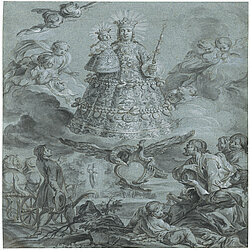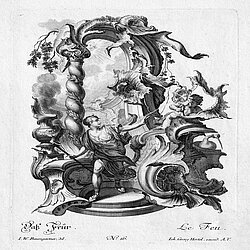Loading the page ...
Johann Wolfgang Baumgartner
1709 Kufstein – 1761 Augsburg
After 1733 Johann Wolfgang Baumgartner worked in Augsburg, where he initially distinguished himself as a reverse glass painter. He subsequently also made his mark as a painter and, from the 1750s onwards, increasingly as a fresco painter. Baumgartner drew stylistic inspiration from Johann Baptist Bergmüller and Georg Philipp Rugendas as well as from other masters associated with the Augsburg Academy. From the 1740s the form of rocaille ornamentation practised in southern Germany became a dominant stylistic element in Baumgartner’s formal idiom. The artist left an extensive corpus of drawings and produced many designs for thesis prints and devotional pictures as well as suites of allegories and myths, which engravers from the Augsburg School transferred to the printmaking medium. What is remarkable is that – in contrast to other local fellow artists such as Johann Georg Bergmüller and Gottfried Bernhard Göz – he never, with a single exception, worked as an engraver himself.
Archive

